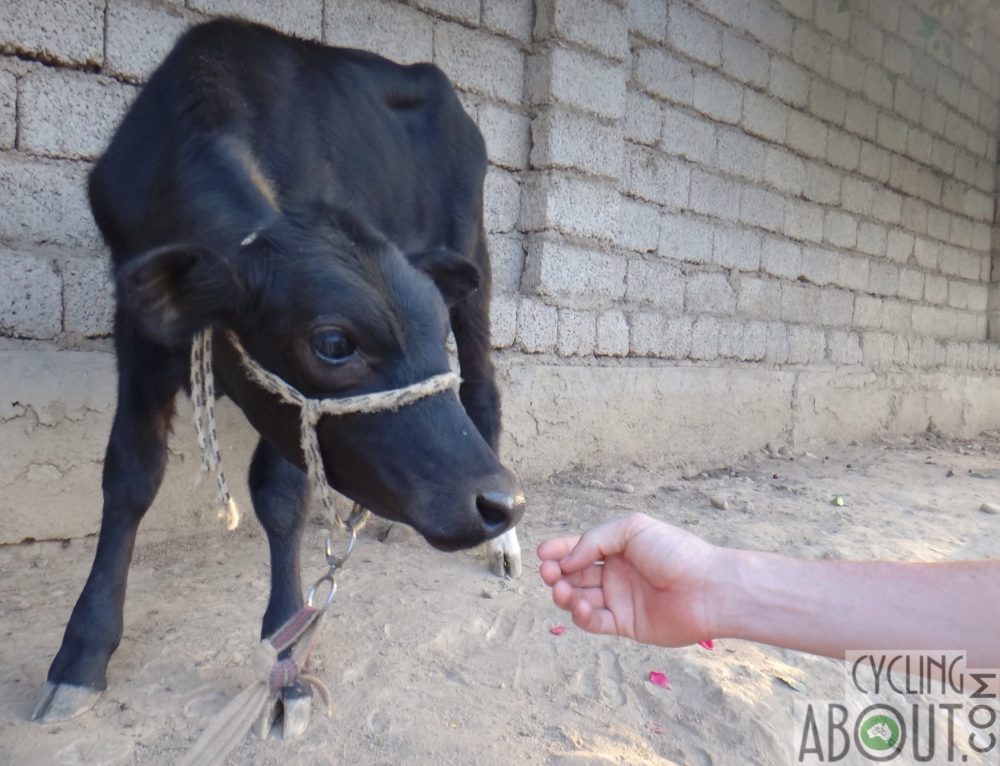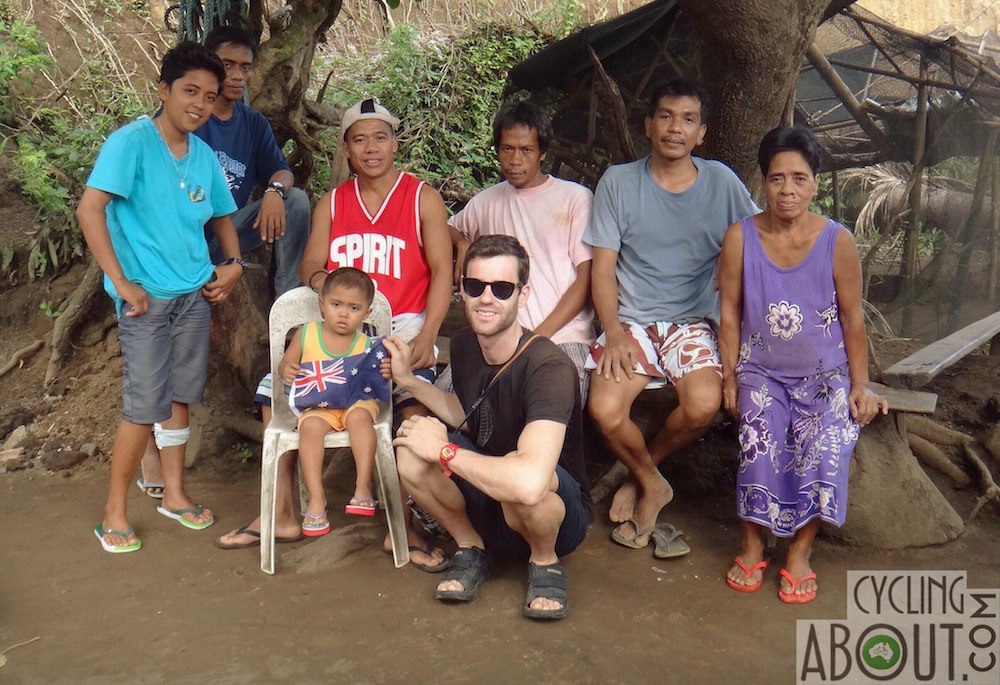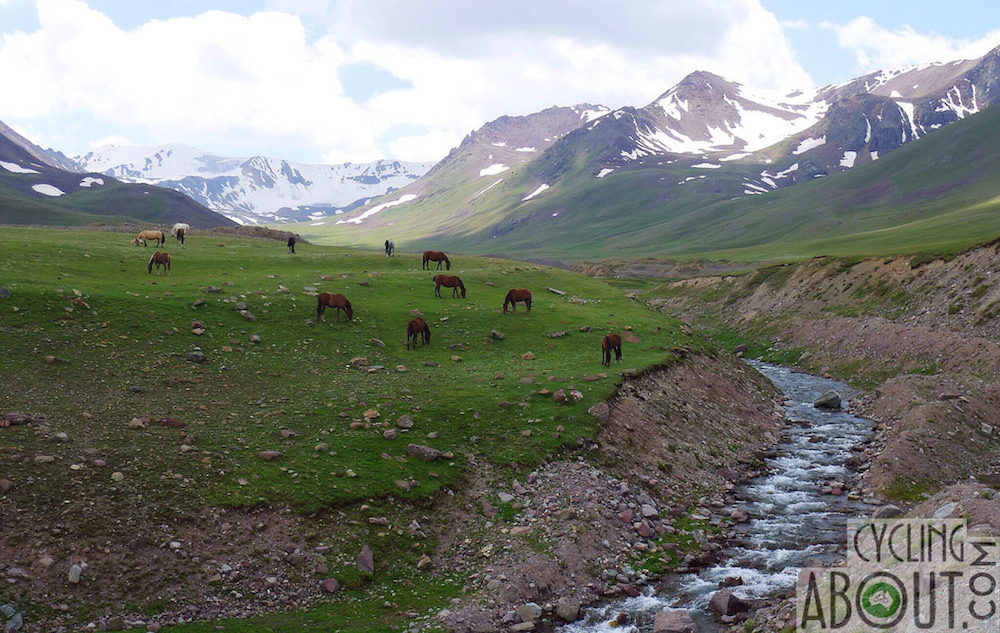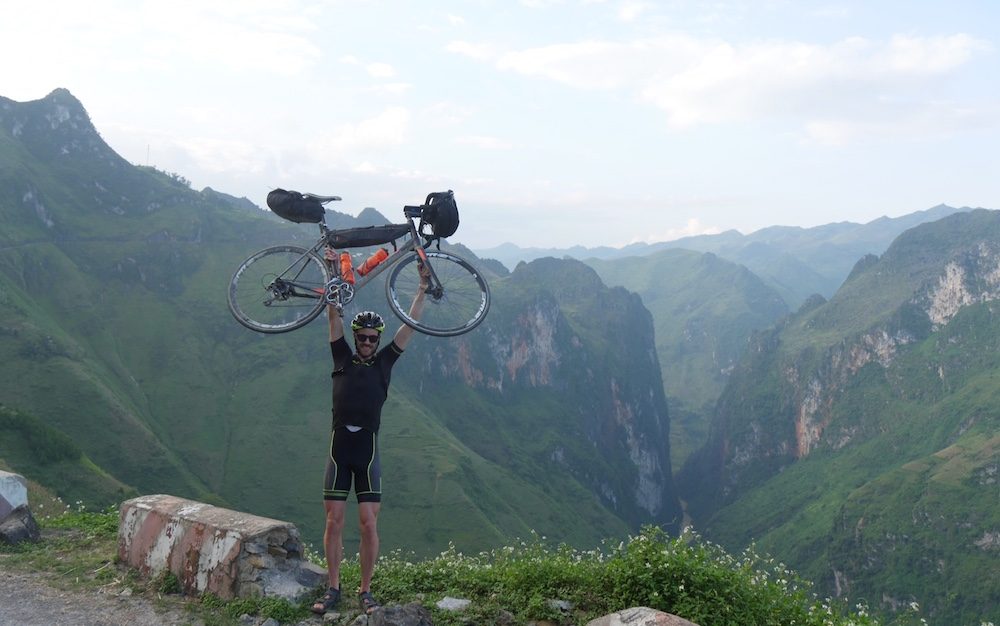Table of Contents
There’s a great misconception that you need animal proteins in order to maintain a healthy diet when exercising.
Having eaten plant-based foods for more than seven years, having travelled all over the globe and having competed in bike races at the pointy end of the field – I’m here to tell you that bicycle touring as a vegan isn’t hard… you’ve just gotta learn the ropes.
What Do Vegans Eat?

Believe it or not, I’ve travelled as a vegan in more than 50 countries and have always found a meal. The secret to vegan travel is preparation. That’s easier in some countries, and a little harder in others. In all situations, a little research will help understand what foods are available and how to go about getting them. Sometimes it means carrying a bit more food than the average bike traveller.
I make my own meals out of supermarkets, convenience stores and petrol stations in most countries. Here’s a list of foods that I typically eat when I’m on the road:
Breakfast
Oats, seeds (chia, sesame, linseed, flax), muesli, cereals, fruit, dried fruit, bread, coconut, peanut butter, jam, soy/almond/coconut milk.
Snacks
Nuts (peanuts, walnuts, almonds), dried fruit (apricots, prunes), muesli bars, regular fruit (all), avocados, peanut butter, jam, bread, dips, potato chips.
Lunch/Dinner
Rice, pasta, noodles, quinoa, couscous, bread, tortillas, chips.
Vegetables (all), beans, chickpeas, lentils, tofu, tempeh, desiccated coconut, canned vegetables, dips (hummus).
Curry powders, vegetable stock cubes, pasta sauce, soy sauce, hot sauce, spices.
Or more specifically: sandwiches, wraps, pasta, pizza, curries, soups, stir-fried noodles, salads, nachos.
Sweets
Dried fruit, regular fruit, liquorice, muesli bars, biscuits, dark chocolate, coconut chocolate, sorbet ice cream.
Preparation is King

Do a little research before you travel because the chances are a vegetarian or vegan has travelled to the same destination before.
You’ll want to know:
– What types of food are likely to be found in restaurants and shops
– Whether you need to prepare your own food (ie. bringing cooking gear)
– How to pronounce a few words and phrases in the local language
– A veg or vegan-friendly restaurant to eat at on your first night
Eating at Restaurants
In countries with a language barrier, you’ll need to learn how to say a few words. Despite any preconceived ideas you may have, people are often VERY accommodating and really want to help!
When I first arrive in a new country I always find somebody who can translate and give me the correct pronunciation for ‘vegetarian food’. I also get the following terms translated: ‘I don’t eat meat’, ‘no meat’, ‘no fish’, ‘no eggs’ and ‘no milk’. A combination of all of these words should be enough to get your message across.
It’s a good idea to have everything written down too, especially if the alphabet characters are different from your own (Chinese, Arabic etc).
I announce that I’m ‘vegetarian’ as soon as convenient. If the waiter looks at me a little confused, I try and repeat myself in a slower or slightly different dialect. If they’re still giving blank looks I show them the written version. Alternatively, if some food is on display, I’ll give a thumbs up or down on each dish.
It will go a long way if you know a handful of vegetarian/vegan dish names. I determine what foods are common in restaurants within the first few days of my arrival, and use them as a guide for my ordering. You may also be asked to go into the kitchen and point out what ingredients or dishes you’d like. This is a really effective way to know what you’ll be getting!
I know this all seems like a bit of a hassle, but in practice, it’s almost always received really well. Sometimes it’ll take 10 seconds to sort out, other times it takes a few minutes. Be patient and persistent, and make sure to profusely thank the restaurant owner, chefs and waiters upon your departure.
Staying With Local People

I find this the trickiest part about travelling vegan. But luckily there are so many ways you can make it fun and enjoyable for everyone involved.
Firstly, you’re going to need to make it abundantly clear that you don’t eat animal products to your host. Like, ASAP. If you’re using CouchSurfing or Warm Showers that information should be in your request to stay. Please try to not be in a situation where someone has prepared a non-vegan meal – just for you!
People who host cyclists are often very open-minded and will be very curious about the how and why of being vegan. But despite this, it can still be stressful for hosts to research how to cook a vegan meal for you. To get around this I like to cook for my hosts on the first night. That affords you time to show them a few cooking tricks and discuss what they can potentially prepare on any other nights.
Make sure to bring your own breakfast and lunch as well, as it’s unfair to expect a host to cater 100% to your needs. I was doing this well before I was vegan.
Cycling in Remote Areas

Again, it’s all about preparation when it comes to cycling through remote areas. Like any bike tour, you’ll want to plan where you can get food and make an educated guess as to availability en route. I often find myself carrying a little extra food, just in case.
Vegetables that keep really well include carrots, potatoes, pumpkins, onions and garlic. These also happen to be very common in remote areas because there’s generally not a daily supply of veggies coming in. You should also have luck finding canned vegetables.
If you’re a bit more prepared, dried beans/lentils are lightweight and can be soaked in a bidon over the course of a day. If you’re more prepared again and have access to a dehydrator, it’s a common hiking trick to prepare a few days worth of fruit and veg for a multi-day ride in the wilderness.
Eating Enough
Lightheadedness is sometimes experienced by newbie vegans, especially when exercising. This is often not due to a poor diet (or a lack of nutrients) but rather… a lack of food! As most vegetables are high in fibre and low in calories, you’ll need to boost serving sizes in order to meet your body’s daily requirements. On a bike tour, that means you can eat until you’re really full!
Vitamins and Minerals
Despite the stereotype that vegans eat endless healthy salads, it’s entirely possible to be unhealthy. Junk-vegans are definitely a thing, after all, you could just eat bread and potato chips if you really wanted…
There can be a few deficiencies in vegetarian and vegan travel diets if you aren’t a bit careful:
B12: This vitamin is pretty hard to absorb from plant-based sources. Although my blood tests have never shown any indication of low B12 in my body, I use a B12 throat spray just in case. Alternatively, it’s possible to get yearly B12 injections.
Iron: Some people – especially women, can have problems absorbing iron from plant-based sources. If you have a history of low iron levels, you should seek medical advice and supplement as required. One little tip to keep your iron up is to eat lots of nuts and seeds for snacks. Dark leafy greens are another excellent source of iron.
It will help to familiarise the below food infographic (I have one printed in my kitchen when I’m home).

My best advice for a balanced diet is to consume as many vegetables as possible. The greener the colour of the vegetables, the better. You will feel great and will have the necessary vitamins and minerals for cycling all day. It’s worth noting that fruit is a very convenient snack and is found almost everywhere in the world. The same can be said about nuts and seeds.
Flexibility Will Help
The idea of consuming animal products is often quite daunting when you’re vegan, I feel ya. But just remember that you can only control so much. Despite doing your best to order food (or find nutritious food options) there are times where you may have to be lenient for the sake of your own health. On my travels, I’ve occasionally made the decision to consume, rather than waste meals that use fish sauce, animal broth, bits of egg, cheese and the odd bit of chocolate.
I definitely don’t get the same enjoyment out of these meals, but as long as I’m doing the best I can, I still feel I’m living within my principles.
FAQ: Aren’t You Weak?

No. This is a myth.
I can literally ride my bike for 24 hours straight and I can ride up the biggest mountains faster than almost anyone I know. The reason I can do these things is that I eat well and ride my bike a lot. Being vegan does not inhibit me in any way, in fact, it has only made me more conscious of the best foods to put in my mouth.
FAQ: Protein?
There’s no need to associate protein with health and strength. There’s actually ample protein in plant-based sources, in fact, you shouldn’t even have to think about protein intake if you eat healthy foods. If you do want to count numbers, for daily bike touring you can aim to hit 1.0-1.5g of protein for every kilogram body weight (it’s really not hard).
Plant-Based Protein Per 100g (3.5oz) in Weight
2.50g – Potato
2.58g – Brown Rice
2.90g – Spinach
4.40g – Quinoa
4.83g – Kidney Beans
4.86g – Pinto Beans
5.36g – Green Peas
7.79g – Macadamia Nuts
7.80g – Lima Beans
8.80g – Wheat Bread
8.90g – Garbanzo Beans
9.02g – Lentils
9.50g – Pecans
13.10g – Soybeans
15.03g – Walnuts
15.31g – Cashew
15.60g – Chia Seeds
16.89g – Oats
17.19g – Tofu
19.50g – Flaxseed
21.35g – Pistachio Nuts
22.09g – Almonds
23.00g – Hemp Seeds
25.09g – Peanut Butter
32.97g – Pumpkin Seeds
Other Vegan Bike Tourers
Marc Michel @ MarcMichel
Ray Pokai @ Vegan Bicycle Touring
Dave and Jen @ Long Haul Trekkers
Cynthia and Max @ WorldByWheel
Olga and Michel @ Rausgefahren
Luba and Tom @ StepOutsideAndExplore
Carmen Mickley @ Vegan Cycling
Dakota and Chelsea @ Traipsing About
Tristan Bogaard @ TristanBogaard
Isis and Clement @ Enjolivelo


Thanks for a great article! Anyone visiting numerous countries may find this useful: https://www.vegansociety.com/shop/books/lifestyle-books/vegan-passport.
That looks really handy. Thanks!
Please correct the article — Vietnamese is NOT written with “alphabet characters are different to your own [English]” any more than French or Spanish is.
Vietnamese uses normal Latin letters, like English. Vietnamese words often have added diacritic marks just like French and Spanish do. Also, the Vietnamese can easily read a phrase with the marks missing — as they often skip them in SMS text messages.
Another suggestion for places like Vietnam and Thailand (or large Buddhist population country) is to learn to say “eat Buddhist food”. Buddhist are vegan — eating nothing from an animal.
This is great news Alee. I’m new to cycle touring.Being following you for sometime now and highly recommend your website to everyone.Now to top it all off your Vegan too.Brilliant!.
Yes,the animals in developing nations like India get treated really badly.It’s so sad.Thanks for going Vegan and all your cycle touring advice.
Thanks for the kind comment, Ian.
Amended.
Great tip!
Thanks. This (Vietnamese using Latin characters) makes it *SO* much easier to get around on your own. If you need to write down something (map, sign, etc…) skipping the diacritic marks, you can show them to a Vietnamese later and they can understand them. I had a great single-person 6 day bike tour south of Hanoi this past summer.
When I was in Beijing, I found most cannot read my poor attempts at copying Chinese characters from signs, and few could read and understand Romanization of Mandarin I’d copy from tourist maps or the Internet.